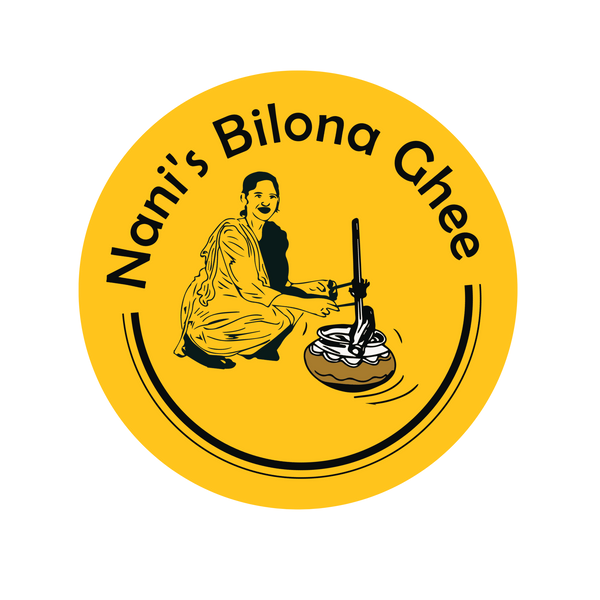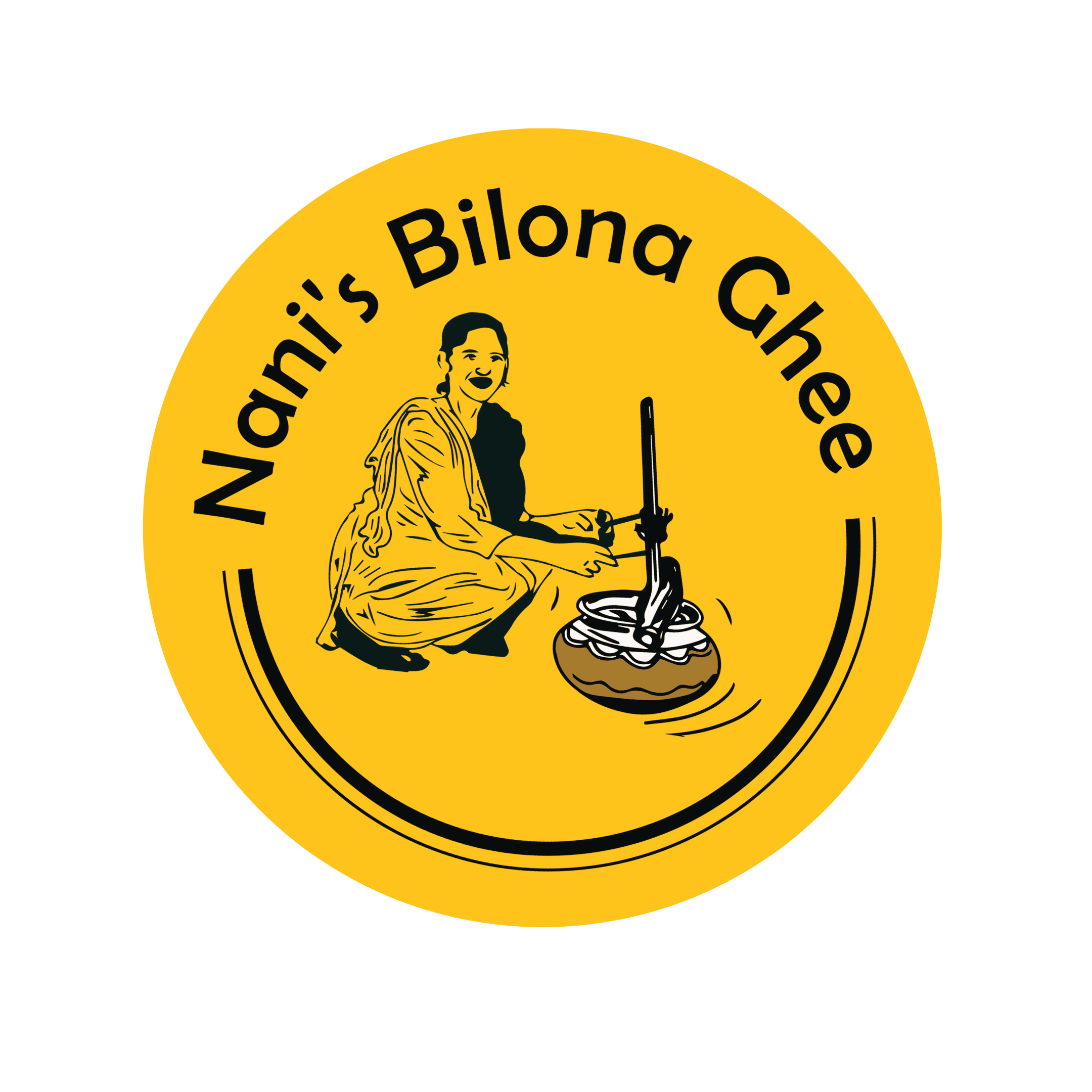
Lab Tested Ghee vs Locally Made – What Really Matters?
Share
Local vs Lab-Tested: Which Ghee Can You Actually Trust?
Your neighbor swears by the “ghee wali aunty” at the end of the street.
Your Instagram feed shows “homemade ghee” sold in reused glass jars with handwritten labels.
And then there’s Nani, whispering in your head, “Beta, dekh ke khana. Sab asli nahi hota.”
In a world full of health promises and shortcut sellers, how do you choose ghee that’s actually safe, pure, and nutritious?
Let’s break it down, lab-tested ghee vs locally made, what really matters, and why.
What is Lab Tested Ghee?
Lab-tested ghee is made under strict regulations and then analyzed in certified labs for:
-
Purity (no vegetable oils or animal fats mixed)
-
Nutritional value (butyric acid, vitamins A, D, E, K)
-
Heavy metal & microbial contamination
-
FSSAI and food safety compliance
At Nani’s Bilona Ghee, every batch undergoes independent lab testing before it reaches your kitchen, not just to tick boxes, but to earn your trust.
Because lab-tested ghee = proof, not promises.
What’s the Problem with Unverified Local Ghee?
Homemade doesn't always mean healthy.
Here’s what most unverified local ghee sellers won’t tell you:
-
No idea where the milk came from
-
No clarity on what cow breed was used
-
No traceability of the ghee-making process (boiled cream or curd? Bilona or shortcut?)
-
No lab reports = no safety net
-
Often stored in reused, unhygienic jars
Without regulation, you’re not just risking taste, you’re risking contamination, toxin exposure, and nutritional loss.
Nutritional & Safety Factors: Why Testing Matters
|
Factor |
Lab Tested Ghee |
Local Unverified Ghee |
|
Milk Source |
Traceable (A2 breeds) |
Unverified / mixed |
|
Process |
Documented Bilona Method |
Unknown / inconsistent |
|
Nutritional Breakdown |
Verified in lab |
No proof |
|
Heavy Metals / Toxins |
Tested and cleared |
Unknown risk |
|
Shelf Life & Hygiene |
Packed safely |
Often in reused bottles |
|
Legal Compliance |
FSSAI Certified |
Mostly non-compliant |
Lab-tested ghee ensures:
-
What’s inside matches what’s promised
-
Nutritional value is preserved
-
Your family’s safety isn’t left to chance
Why Lab Reports Build Real Trust
Think of a lab report like a ghee passport.
It shows:
-
No adulteration (no vanaspati, no vegetable fats)
-
High levels of butyric acid, a marker of quality
-
Zero microbial or bacterial growth
-
Safe shelf life and proper handling
At Nani’s, we test every batch and share certificates, because transparency builds trust, and trust builds legacy.
👉 Related: How to Identify Pure Ghee – And Avoid Fakes
Most Common Adulteration Practices in Local Ghee
Sadly, not all that glitters is gold, and not every golden liquid is pure ghee.
Some common malpractice found in local ghee:
-
Mixing vanaspati or vegetable oil to increase yield cheaply
-
Adding starch or flour to fake thickness
-
Using synthetic essence to mimic natural aroma
-
Skipping proper fermentation, rushing the process to save time
Without lab checks, these adulterations are invisible to the naked eye but harmful over time.
How to Read a Ghee Lab Report?
Not all lab tests are created equal.
When you ask for a report, look for:
✅ Butyric acid percentage (higher = better gut health)
✅ Total fat and saturated fat (confirming it's real milk fat)
✅ Moisture content (low = longer shelf life)
✅ Absence of adulterants (like starch, hydrogenated fats)
✅ Microbial growth tests (no bacteria = safe for children and elders)
If a brand is serious about quality, they’ll proudly show these results.
What to Look for in a Ghee Brand?
Here’s your simple checklist:
-
Traditional Bilona method
-
A2 cow milk sourcing
-
Third-party lab testing
-
No added preservatives or chemicals
-
Transparent labeling and certification
-
Hygienic packaging and handling
Because you deserve to know what you're feeding your body.
What We Do Differently at Nani’s Bilona Ghee?
At Nani’s, we refuse shortcuts.
We proudly offer:
-
Hand-churned Bilona method ghee
-
Milk sourced only from free-grazing, A2 Sahiwal cows
-
No chemicals, no shortcuts, no compromises
-
Third-party lab testing to guarantee every drop
-
Ethical packaging that maintains hygiene and freshness
It’s the love of tradition, plus the assurance of science.
👉 Related: What Makes Bilona Ghee the Healthiest Fat
Real-Life Scenarios Where Lab-Tested Ghee Matters
-
For Babies: Their delicate digestion needs pure, chemical-free nutrition.
-
For Elders: Their immunity demands uncontaminated, easily digestible fats.
-
For Adults: Real ghee supports mental clarity, metabolism, and emotional stability.
-
For Everyone: Food should be medicine, not a gamble.
Your family deserves trust, not guesswork.
Final Thoughts: Homemade Isn’t Always Healthier
Yes, homemade sounds emotional.
But in today's world of mass production and shortcuts, "homemade" without testing can be a risky game.
Lab-tested ghee isn’t about being commercial, it’s about being accountable.
When you choose Nani’s Bilona Ghee, you’re choosing:
- Heritage
- Purity
- Verified nutrition
- Uncompromised safety
Because tradition and trust should always come hand-in-hand.
FAQs
1. Is lab-tested ghee safer than local homemade ghee?
Yes. It guarantees purity, safety, and zero adulteration.
2. Can local ghee be trusted if it's homemade?
Only if supported by lab tests and transparent sourcing.
3. What does a ghee lab test usually check for?
Purity, butyric acid levels, microbial growth, adulterants, and shelf stability.
4. Is commercial ghee always lab tested?
No. Only responsible brands offer third-party lab reports openly.
5. Why is lab tested Bilona Ghee more expensive?
Because it combines time-honored techniques with modern safety standards, offering nutrition you can trust.
🔍 See the Difference Yourself.
Shop lab-tested, slow-churned Nani’s Bilona A2 Cow Ghee

